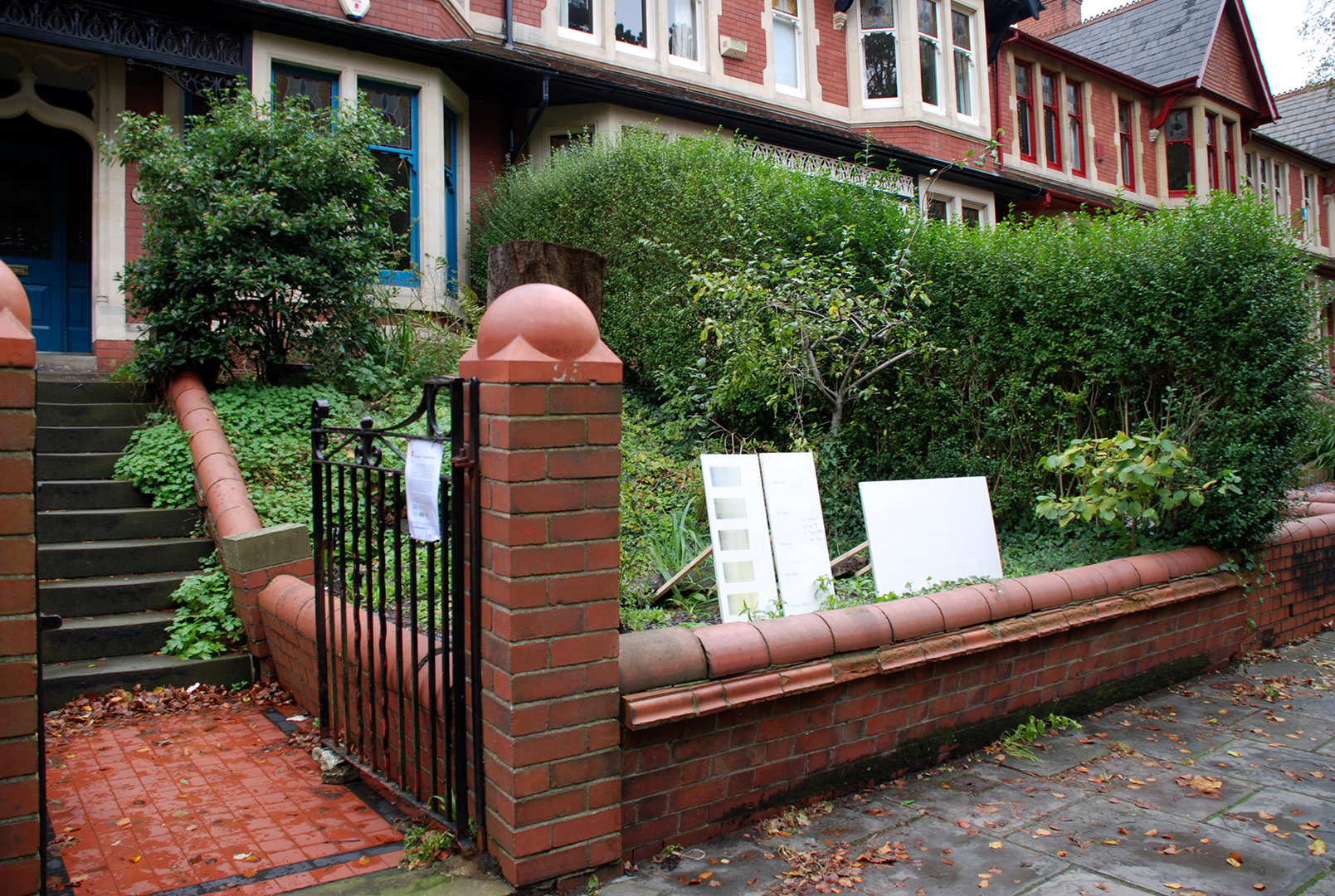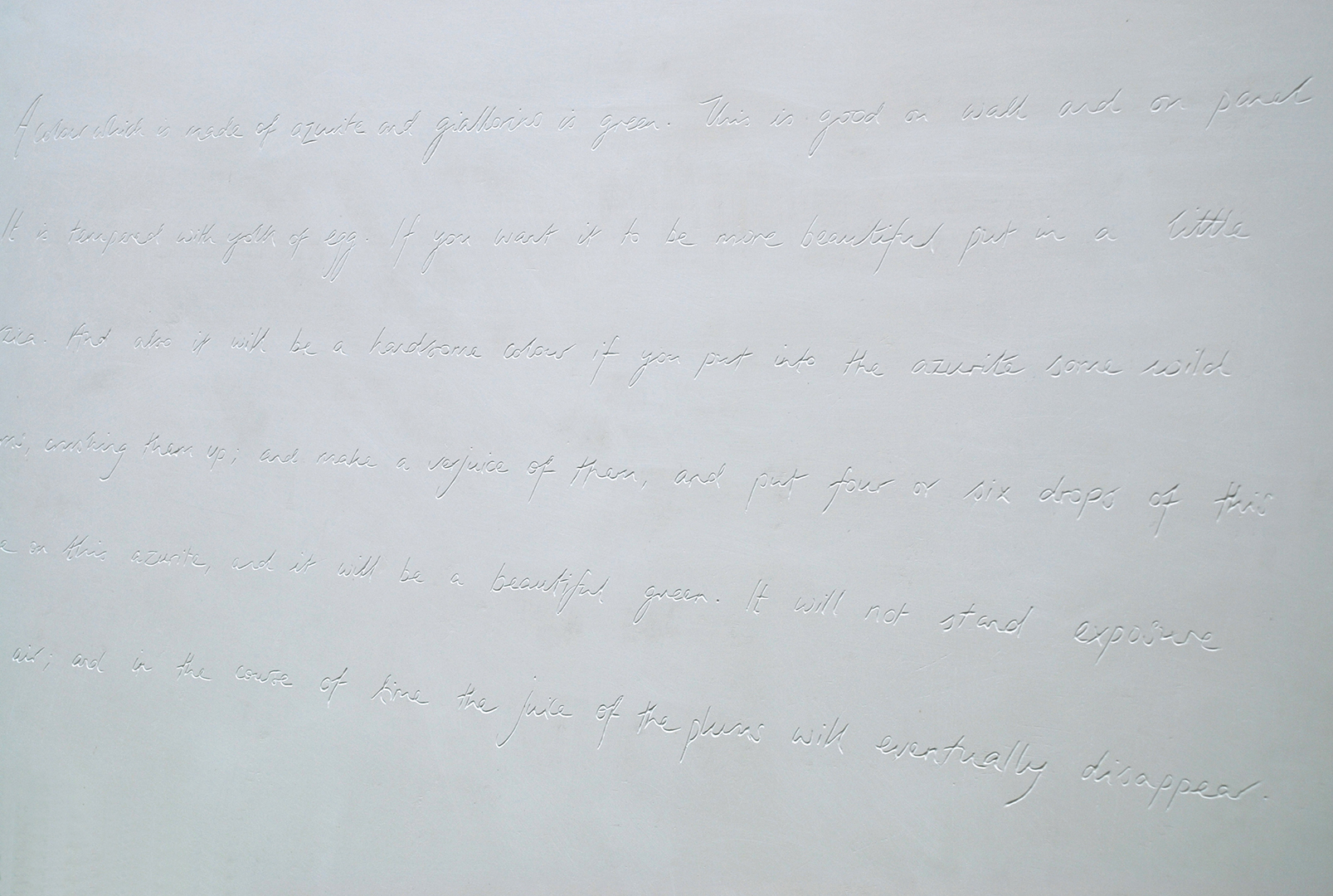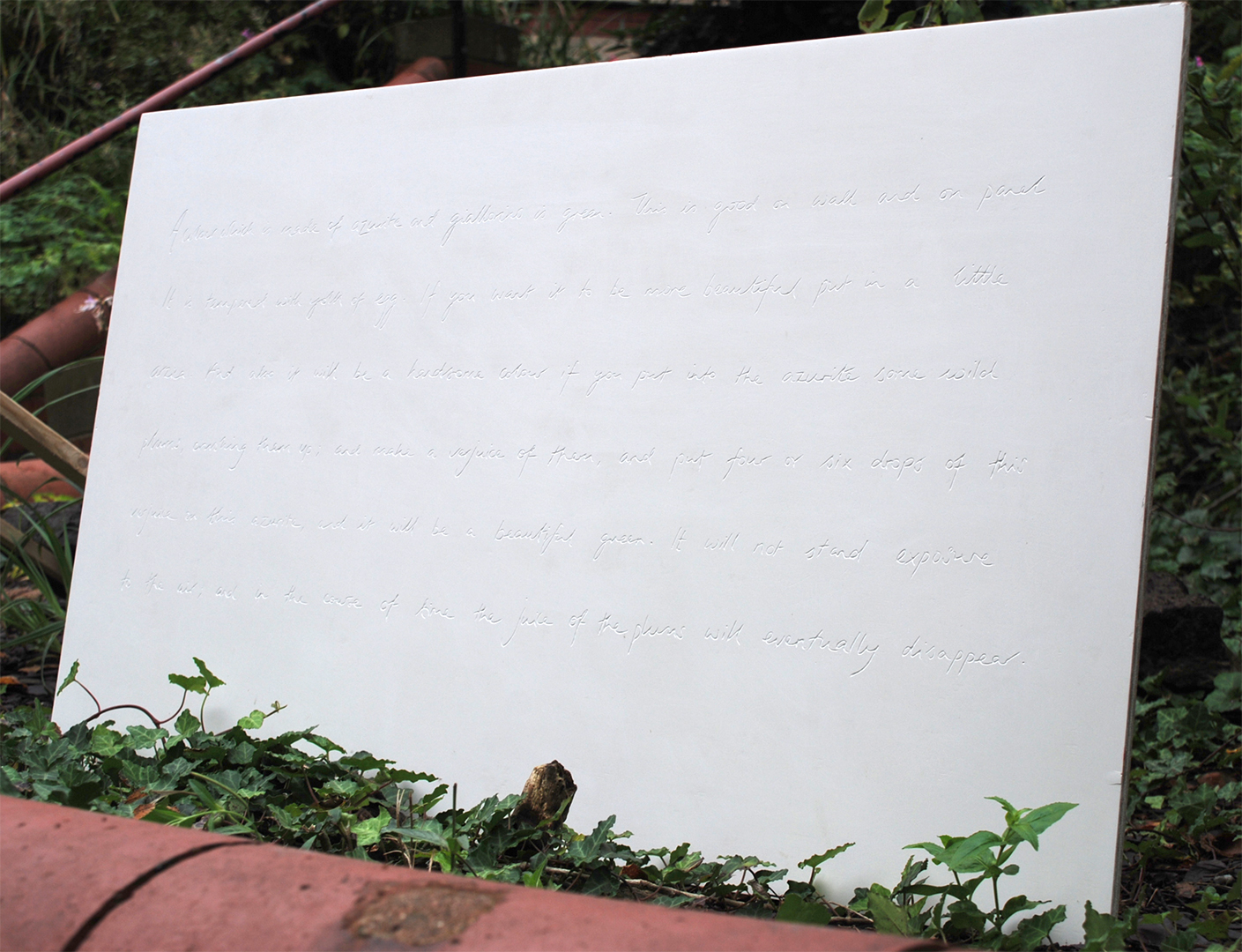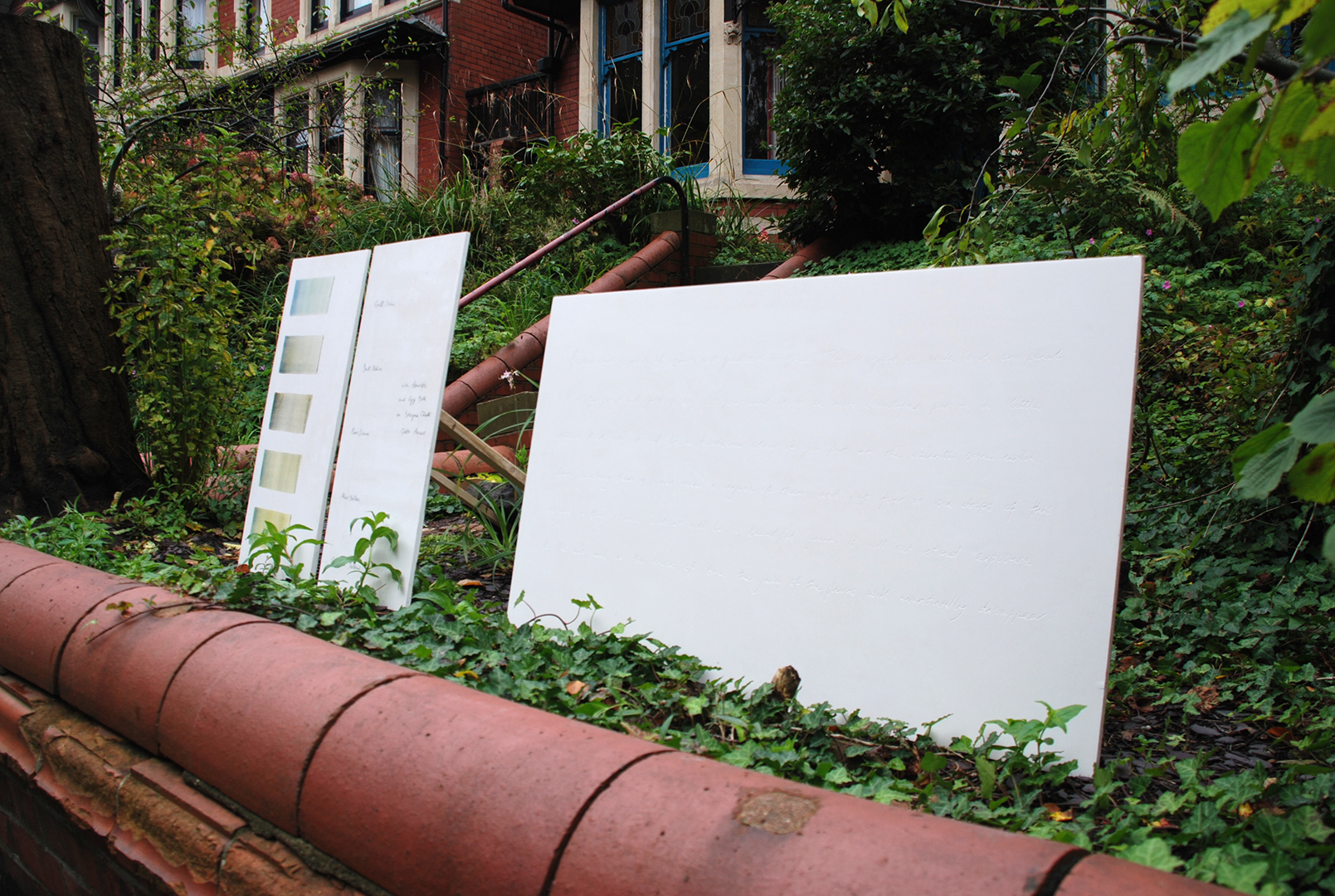Rhod in Roath, Cardiff, 2014
“A colour which is made of azurite and giallorino is green. This is good on wall and on panel. It is tempered with yolk of egg. If you want it to be more beautiful, put in a little arzica. And also it will be a handsome colour if you put into the azurite some wild plums, crushing them up; and make a verjuice of them, and put four or six drops of this verjuice on this azurite; and it will be a beautiful green. It will not stand exposure to the air; and in the course of time the juice of the plums will eventually disappear’’
Cennino d’Andrea Cennini, on the most handsome of colours for foliage, 1400s
Whilst many of the colours in Cennini’s handbook can still be made (their name and availability are still within grasp), this particular green may only exist in the imagination. At the very least, if it did become known precisely which plants the ‘wild plums’ and ‘arzica’ are derived from, and assuming the toxic lead antimonite that makes up giallorino is brought back into use, this green might exist – but only then for a fleeting moment, as this green is what is termed a ‘fugitive’ - a colour that changes or disappears on exposure to air or proximity to other chemicals.
The idea of Cennini’s green and its ‘fugitive’ nature in both allegorical and physical terms allows a point of departure for work in the garden at 95, where work explores the desire for permanence against that which is fleeting, and the ways that materials can speak not only of what now exists in imagination, through words from the past, but also allude to the potential for what exists now to be fugitive in Nature, in a future under threat.





for more information on participants, click Rhod in Roath, 2014
Previous / Back to Exhbitions